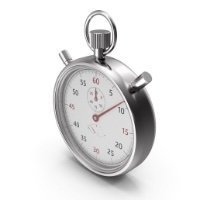Thailand strives to become a world leader in Green Building
-
Recently Browsing 0 members
- No registered users viewing this page.
-
Topics
-
Popular Contributors
-
Latest posts...
-
8
Thai Ranger Calls Out Italian Tourists for Damaging Coral Reefs
The open border policy, allowing tourists to stay for such a long time is destroying Thailand. You do not see these type of visitors in Dubai, Malaysia, China, etc Would this tourist been so open in his behaviour in Dubai or China? Not a chance. Ask yourself why they feel embolded to behave this way in Thailand ? Thailand is attracting low quality cheap thick tourists. -
8
Thai Ranger Calls Out Italian Tourists for Damaging Coral Reefs
Quality tourist indeed. So we have : Draft dodging Russians Benidorm British chavs Sex pest Indians Now we have the enviromentally destroying Italian Stallions -
5
Looking to buy a Behringer XM8500 microphone - having trouble sourcing
Looks like a fake shop. 20 pages of products but no sales. Loads of those showing up recently. After you search, check the "local" box in the left column under "shipped from". -
27
AI Bots Secretly Talking in Their Own Language Sparks Fears of a Tech Takeover
So, contrary to the panicky headline, it isn't actually a case of AI bots secretly talking in their own language at all. -
40
Introspection: Are You a Chronic Complainer, or Are These Just Minor Inconveniences?
You’re acting a bit strange, mate. I left just one comment on your post, and now you seem obsessed. Are you stalking me? I also noticed you make hundreds of posts here every week. That’s excessive and not really healthy or normal behavior. Maybe consider seeking some mental health support. Just sayin. -
15
-
-
Popular in The Pub
-
.png.3b3332cc2256ad0edbc2fe9404feeef0.png.8488ab72b8bb2e508209bfe3211b6e08.png)


.thumb.jpeg.d2d19a66404642fd9ff62d6262fd153e.jpeg)

.thumb.jpg.b54783ad387f65d779e04f535fcfeee9.jpg)


Recommended Posts
Create an account or sign in to comment
You need to be a member in order to leave a comment
Create an account
Sign up for a new account in our community. It's easy!
Register a new accountSign in
Already have an account? Sign in here.
Sign In Now